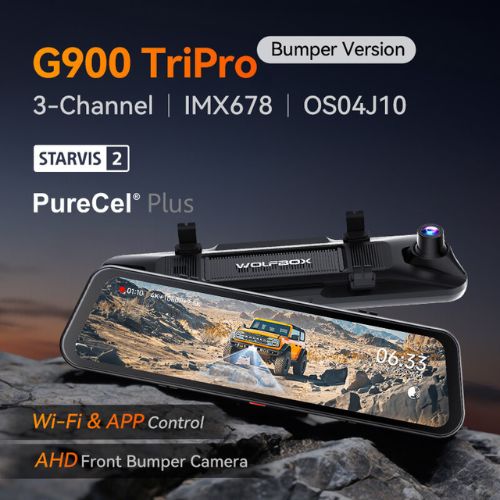Inside this Article:
1. The Benefits of Installing a Reverse Camera System
As modern vehicles continue to evolve, a reverse camera has become an increasingly essential safety feature. These specialized cameras provide drivers with a clear, wide-angle view of the area directly behind their car, helping to eliminate dangerous blind spots and enhance visibility when backing up.
One of the primary advantages of a reverse camera is improved visibility. Compared to solely relying on your vehicle's rearview and side mirrors, a high-quality camera can give you a much broader perspective of your surroundings. This makes it easier to spot pedestrians, objects, or other obstacles that may be out of your normal line of sight. The increased awareness afforded by a reverse camera system significantly reduces the risk of accidents or collisions when maneuvering in reverse.
In addition to enhanced safety, reverse cameras also provide invaluable convenience and confidence for drivers. Navigating tight spaces, parallel parking, or backing into a spot becomes a far less stressful endeavor when you can clearly see the area behind you on the display screen. The ability to accurately judge distances and trajectories takes the guesswork out of reversing, allowing you to execute these maneuvers with precision.
Reverse camera systems are particularly beneficial for detecting small children, pets, or low-lying objects that may be hidden in your blind spot. This can help prevent devastating accidents that all too often occur when drivers are unable to see these vulnerable road users. The visual feedback from a reverse camera acts as an essential safety net, giving you an extra layer of protection when backing up.
2. How to Choose the Right Reverse Camera System
When selecting a reverse camera solution for your vehicle, there are several key factors to consider in order to ensure you get the best possible system:
Camera Quality:
Look for a high-definition camera with a wide viewing angle, ideally 170 degrees or more. This provides maximum coverage and clarity of the area behind your car.
Display Size and Resolution:
The display screen should be large enough to give you a clear, detailed view. Aim for a minimum resolution of 720p HD for sharp, easy-to-see images.
Ease of Installation:
Choose a reverse camera system that is straightforward to install, either as a DIY project or with professional assistance. Some models are designed for direct integration with your vehicle's existing infotainment system.
Additional Features:
Consider extra functionalities like dynamic parking guidelines, night vision capabilities, or multiple camera views to further enhance the system's utility.
Durability and Weather Resistance:
Make sure the reverse camera is built to withstand the elements and maintain reliable performance in various weather conditions.
3. Installing a Reverse Camera System
The process of installing a reverse camera typically involves a few key steps:
- Securely mounting the camera at the rear of your vehicle, often on the license plate frame or above the rear license plate.
- Routing the camera's video cable through the vehicle and to the dashboard or infotainment display area.
- Connecting the camera's power supply, usually by tapping into the reverse light circuit or another 12V source.
- Configuring the camera settings and display preferences to your liking.
Many reverse camera kits come with detailed installation guides, and some systems are designed for easy DIY installation. However, for a professional, seamless integration, it's often best to have the system installed by an automotive electronics specialist.

4. Maintaining Your Reverse Camera System
To ensure your reverse camera continues to function reliably, it's important to perform regular maintenance and inspections, including:
- Keeping the camera lens clean and free of dirt, debris, or obstructions
- Checking the power connections and cable routing for any signs of wear or damage
- Updating the system's firmware or software as new versions become available
- Addressing any issues or malfunctions promptly to avoid safety concerns
With proper care and maintenance, your reverse camera system will continue to provide invaluable assistance and peace of mind every time you put your vehicle in reverse.
5. Common Questions About Reverse Cameras
Q: Do I need a reverse camera if my vehicle already has parking sensors?
A: While parking sensors can be helpful, a reverse camera provides a much more comprehensive view of the area behind your vehicle. The visual feedback from the camera is often more useful than just relying on proximity alerts.
Q: Can I install a reverse camera on an older vehicle?
A: Absolutely! There are many aftermarket reverse camera kits designed for easy installation on a wide range of vehicle makes and models, both new and old.
Q: Will a reverse camera drain my car's battery?
A: Modern reverse camera systems are designed to have minimal impact on your vehicle's battery. As long as the system is properly installed and configured, the power draw should be negligible.
Q: Can I use my reverse camera for more than just backing up?
A: Yes! Many reverse camera systems offer additional features like multiple viewing angles, dynamic guidance lines, and even the ability to use the camera while driving forward for an enhanced all-around view.
Q: How do I know if my reverse camera is working properly?
A: Regularly check the camera lens for any obstructions or damage, and verify that the display screen is providing a clear, uninterrupted view when your vehicle is in reverse. If you notice any issues, it's best to have the system inspected by a professional.






Leave a comment
This site is protected by hCaptcha and the hCaptcha Privacy Policy and Terms of Service apply.